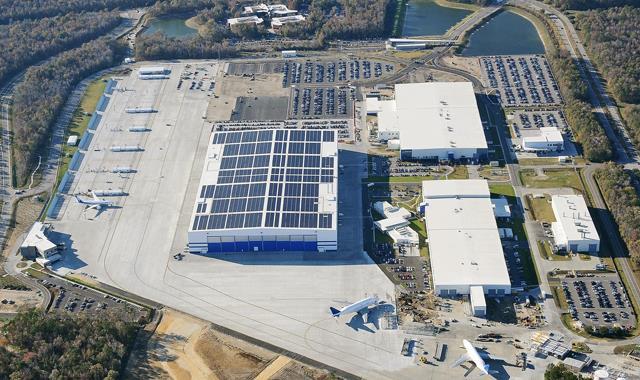Leeham News and Analysis
There's more to real news than a news release.
Gov. Inslee misses the point in his pique over Boeing 787 production decision
By Scott Hamilton
Analysis
Oct. 5, 2020, © Leeham News: The contrast in tones couldn’t be sharper.
With the announcement last Thursday by Boeing it will consolidate 787 production from Everett into Charleston, local political leaders were disappointed but understanding and even sympathetic.
Snohomish County Executive Dave Somers and Everett Mayor Cassie Franklin likened Boeing to a family member who was in crisis. Hard decisions by Boeing were made, but in a crisis, you must. Support your family. Understand the situation. Figure out how to make the best of it to move forward.
On the other hand, Gov. Jay Inslee vowed to review the state’s relationship with Boeing and tax breaks granted to the company. Inslee claimed understanding but his tone was hostile, defiant and angry.
Related stories
Pontifications: Boeing works on green aviation initiatives
Oct. 5, 2020, © Leeham News: Even as Boeing works its way through the final days of the 737 MAX grounding and how to survive the COVID-19 crisis, it’s working on greener aviation.
LNA already reported how Boeing views the prospects of hydrogen, hybrid and electric power. Another article discusses Boeing’s work in disinfecting airplanes to combat COVID.
Here are some other areas Boeing is working on.
Sunset of the Quads, Part 9, Wrap-up
Subscription Required
By Vincent Valery and Bjorn Fehrm
Introduction
Oct. 1st, 2020, © Leeham News: Last week, we compared the economics of the A380 against the 747-8 and 777-9 on the Frankfurt to New York route. We now wrap-up our series on the significant passenger quad-jets of the last 30 years and how competitive they were against other quads and the twins that gradually took over the very large aircraft segment.
Summary
- A resounding success, a respectable career, and three commercial failures;
- Prospects for a Quad-jet passenger operation in the post-COVID world are slim;
- The next quads will come as low emission technology drives implementations to smaller propulsive units.
Boeing needs to show respect for taxpayers, Gov. Inslee says
By Scott Hamilton
Oct. 1, 2020, © Leeham News: Washington Gov. Jay Inslee reacted today to Boeing’s decision to consolidate 787 production in Charleston (SC) with a threat.
“Boeing’s decision to take the 787 to South Carolina necessitates a review of our partnership and the company’s favorable tax treatment,” said in a statement.
Boeing needs to respect Washington taxpayers, he said.
The county executive and the city mayor where the Washington 787 Final Assembly Line #1 is located promised support and strengthening the relationship with an eye toward economic recovery and a future New Boeing Airplane (NBA).
This is no time for divisions, said Snohomish County Executive David Somers when asked about Inslee’s threat.
Everett Mayor Cassie Franklin agreed. She said it’s time to support Boeing, a “family member,” who is hurting in this economic crisis triggered by the COVID-19 pandemic.
It’s official: Boeing to consolidate 787 production in Charleston in 2021
Oct. 1, 2020, (c) Leeham News: It’s official: Boeing confirmed this morning what has been expected since late July: 787 production will be consolidated in Charleston at its 787 final assembly line.
Consolidation will be from mid-2021, earlier than the previously announced 2022 date. Production next year will decline to 6/mo.
Boeing issued the following press release this morning:
Nobody should be surprised at Boeing decision
| By Scott Hamilton
Commentary Oct. 1, 2020, © Leeham News: Nobody, but nobody, should be surprised that Boeing is going to consolidate 787 production in Charleston (SC). This die was cast Oct. 28, 2009, when Boeing announced that the second 787 Final Assembly Line would be placed in Charleston instead of Everett. It was only a matter of time.  Boeing 787 production and assembly plants in Charleston (SC). Source: Flight Global. |
Retrospective-4, 11/1/09: 787 Line 2 Postmortem
Retrospective-3, 10/20/09: Dueling Messages: Boeing vs IAM
Read more
Retrospective-2, 10/29/09: 787 Line 2 aftermath
Retrospective-1, 10/28/09: Boeing to Charleston for 787 FAL #2

 Last month, Gov. Jay Inslee of Washington asked Boeing if there was anything the state could do to persuade Boeing do keep Line 1 in Everett.
Last month, Gov. Jay Inslee of Washington asked Boeing if there was anything the state could do to persuade Boeing do keep Line 1 in Everett.



